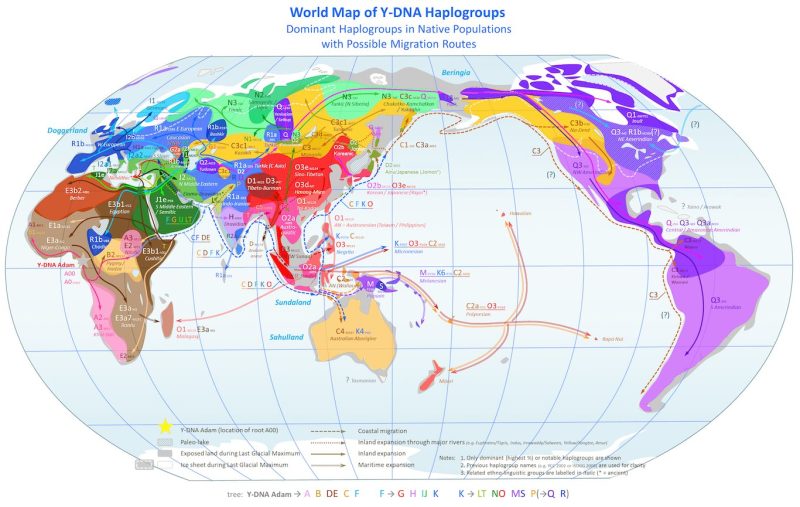We live in strange times. There are people who ask – what is a woman? And similar questions also arise about ethnicities and peoples. Whether this is just problematisation and relativisation to confuse and belittle, or whether these are real, sensible questions, we don’t really need to go into that. Personally, however, I am suspicious of questions for the sake of questions.
So what is a Swede? I’ve already touched on this question before regarding Swedish culture and customs. Where duty, team spirit, hard work and asceticism, simplicity are in focus. And a culture of trust, which in the past meant that the inhabitants hardly had to lock their house or car doors.
We note a large dose of egalitarianism, with free self-owning farmers and a higher status for women than in other cultures. There is an ancient tradition of councils that brought people together to resolve disputes. The Riksdag has a long history, and Swedes do not like despots or autocratic kings. Before the 16th century, even the king was elected, known as an electoral kingdom.
Swedes also have a distinctive appearance with fair skin and hair and blue eyes, with a high average height. Of course, not all Swedes look like this, it is a statistical overview of unique characteristics.
People don’t like to talk about genetics, but Swedes are fairly unique along with their Germanic relatives. Swedes have a high proportion of the Y-DNA haplogroup I1, higher than their neighbours. We also see that this is a limited group in the world, an extremely small minority of the earth’s almost 8 billion inhabitants.
Geographically, we find the embryo of Sweden in the regions around the old Svea and Götaland, with later expansion to the north and south. Erik Segersäll is the first historically documented king of Sweden (and perhaps also Denmark), living in the latter half of the 10th century.
Swedish history offers interesting events, starting with the Migration Period and the Germanic expansion in Europe and the conquest of Rome, the Viking raids and the creation of cities in the East, elite troops in Constantinople, the Hanseatic League, the Kalmar Union, the 30-year war, the Swedish Empire, and in recent years a country characterised by a stable policy of neutrality with major contributions in research and development. There is a significant proportion of Swedish descendants in the northern USA, and a smaller proportion in Finland, the Baltic States, Russia, etc. Today, Swedes move to the UK, Spain, Florida, Thailand, etc.
Swedes are often described as organised and engineering-minded; the list of inventors is also long and star-studded, with names such as Polhem, Celsius, Linnaeus, Nobel, LM Ericsson, de Laval, Ångström and others. There are also many authors, such as Stiernhielm, Nordenflycht, Tegnér, Lagerlöf, Lagerkvist, Strindberg, Martinsson, to name a few.
When it comes to holidays and celebrations, there are also specialities such as Midsummer, Lucia, and the crayfish festival alongside the traditional Christian festivals. And Swedish culture offers a rich variety of music, with old fiddlers and songs, but also new composers and advances in the world of pop music. Many Swedes also have a fondness for nature, forests, lakes and the sea. Hiking, mushroom and berry picking, hunting, fishing and sailing in archipelago environments are popular, but also simpler things like jogging in the woods, etc.
Culinary culture is often seen as a trivial but important measure of culture. When it comes to Swedish cookery, it is influenced by European, especially French, with many delicious domestic additions and touches. When many people talk about meatballs, I rather think of beef with raw horseradish, egg yolk and fried potatoes, Wallenbergare, steak Rydberg, raggmunk with pork, sailors steak, etc. Then there are the delights of the sea, with cold-smoked salmon with dill-stewed potatoes, Skagen toast, smoked shrimps, gravad salmon, pickled herring of various flavours, butter-fried perch, cod, herring, etc. Anyone who takes a look at Swedish home cooking realises that it constitutes its own micro-universe within the European one.
I am sure I have missed many things, but the idea is not to write an all-inclusive article, but rather an introduction for those who do not know or have forgotten.
So, the question of Swedishness consists of several different interrelated things, partly ethnic and partly culture, and the mix that occurs in between. Just as all other peoples are unique in their respective ways, so is the Swede, both in body and mind.








